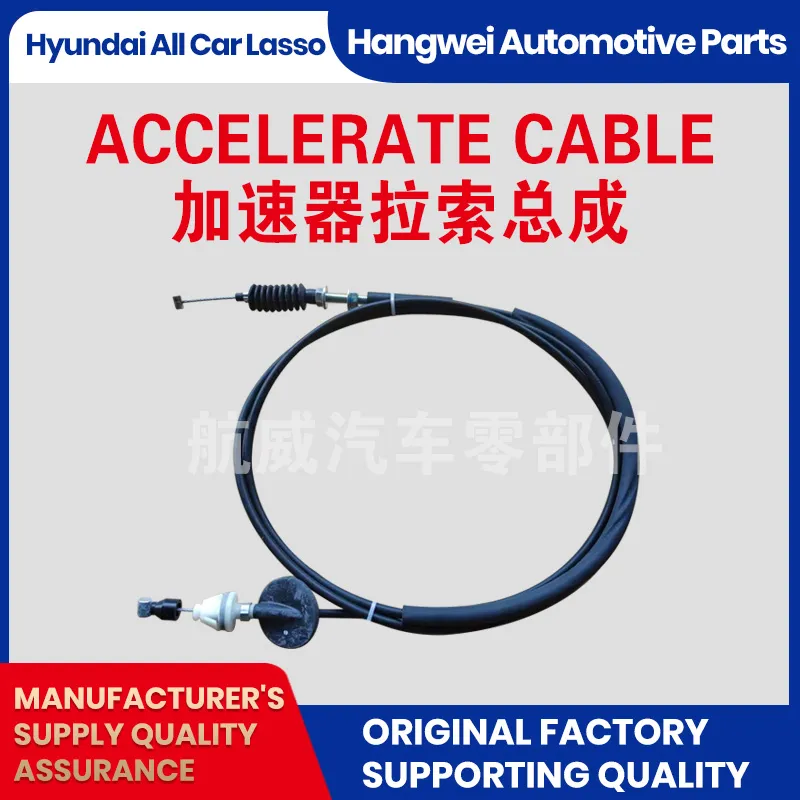Understanding Throttle Control and Cable Functionality in Automotive Systems
Understanding Throttle and Throttle Cable An Essential Guide for Vehicle Performance
In the realm of automotive engineering, the throttle and throttle cable play a crucial role in the performance and efficiency of vehicles. These components are fundamental to the operation of internal combustion engines, allowing drivers to control the speed and power of their vehicles. In this article, we will explore the functions, mechanisms, and importance of the throttle and throttle cable in modern automobiles.
What is a Throttle?
The throttle is a device that regulates the flow of air into the engine's intake manifold. It is essentially the control valve for the air-fuel mixture that powers the engine. When a driver presses the accelerator pedal, they effectively open the throttle, allowing more air (and consequently more fuel) to enter the engine. This combination increases the engine's power output, enabling the vehicle to accelerate.
Modern vehicles often utilize electronic throttle control (ETC) systems, which replace traditional mechanical linkages with sensors and actuators. This advancement enhances precision and responsiveness, improving engine performance and fuel efficiency while also facilitating the implementation of advanced features such as cruise control and traction control.
The Role of the Throttle Cable
In older mechanical systems, the throttle is directly linked to the accelerator pedal via a throttle cable. This cable is a flexible metal wire housed within a protective casing, connecting the pedal to the throttle body. When the accelerator is pressed, the cable pulls on the throttle plate, opening it and allowing air to flow into the engine.
While many modern vehicles have transitioned to electronic throttle systems, understanding the throttle cable is still important, particularly for vintage cars and some lower-end models. A well-maintained throttle cable is vital for ensuring a smooth and responsive driving experience. If the cable becomes frayed, stretched, or bound, it can lead to unresponsive throttling, causing potential safety hazards and performance issues.
Common Issues with Throttle Cables
Throttle cables, while generally reliable, can encounter several issues over time. Common problems include
1. Fraying Continuous movement can wear down the cable, leading to frayed ends that compromise the throttle's responsiveness.
throttle and throttle cable

2. Sticking Dirt and debris can accumulate in the throttle body or around the cable, causing it to stick. This may result in inconsistent power delivery and acceleration.
3. Stretching Over time, throttle cables can stretch, which can prevent the throttle from opening fully. This limits the engine’s power output and may hinder acceleration.
4. Kinking A kinked cable can impede the smooth operation of the throttle, leading to erratic engine response or failure to return to the closed position when the accelerator is released.
Maintenance and Care
For those with vehicles that utilize a mechanical throttle cable, regular inspection and maintenance are essential. Here are a few tips to ensure optimal performance
- Routine Checks Regularly inspect the throttle cable for signs of wear, fraying, or damage. Replace it if any issues are observed.
- Cleaning Keep the throttle body clean from debris and dirt. A clean throttle ensures smooth airflow and optimal engine performance.
- Lubrication Some throttle cables may benefit from periodic lubrication to prevent sticking and ensure smooth operation.
Conclusion
The throttle and throttle cable, while often taken for granted, are integral components of vehicle operation. Understanding their function and maintenance can help drivers optimize their vehicle's performance. With the shift towards electronic throttles, many new cars are less reliant on physical cables, but knowledge of these systems remains valuable, especially for enthusiasts and those working with vintage models. By ensuring that these components are in good working order, drivers can enhance their overall driving experience, ensuring their vehicles respond precisely to their commands on the road.
-
Upgrade Your Vehicle with High-Quality Handbrake CablesNewsNov.01,2024
-
Optimize Your Bike's Performance with Quality CablesNewsNov.01,2024
-
Enhance Your Vehicle's Performance with Quality Clutch ComponentsNewsNov.01,2024
-
Elevate Your Vehicle's Performance with Quality Throttle CablesNewsNov.01,2024
-
Elevate Your Vehicle's Performance with Quality CablesNewsNov.01,2024
-
Affordable Solutions for Your Cable NeedsNewsNov.01,2024
